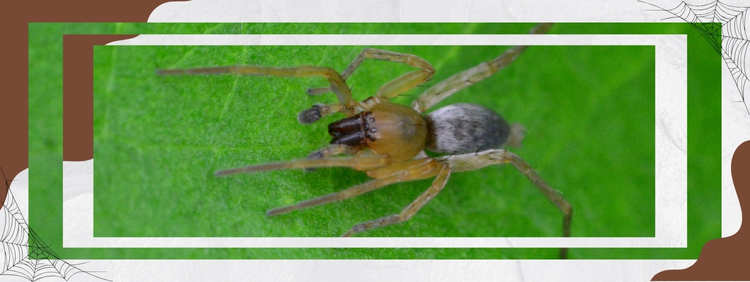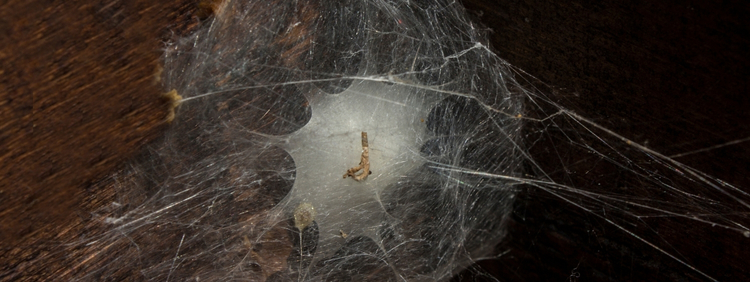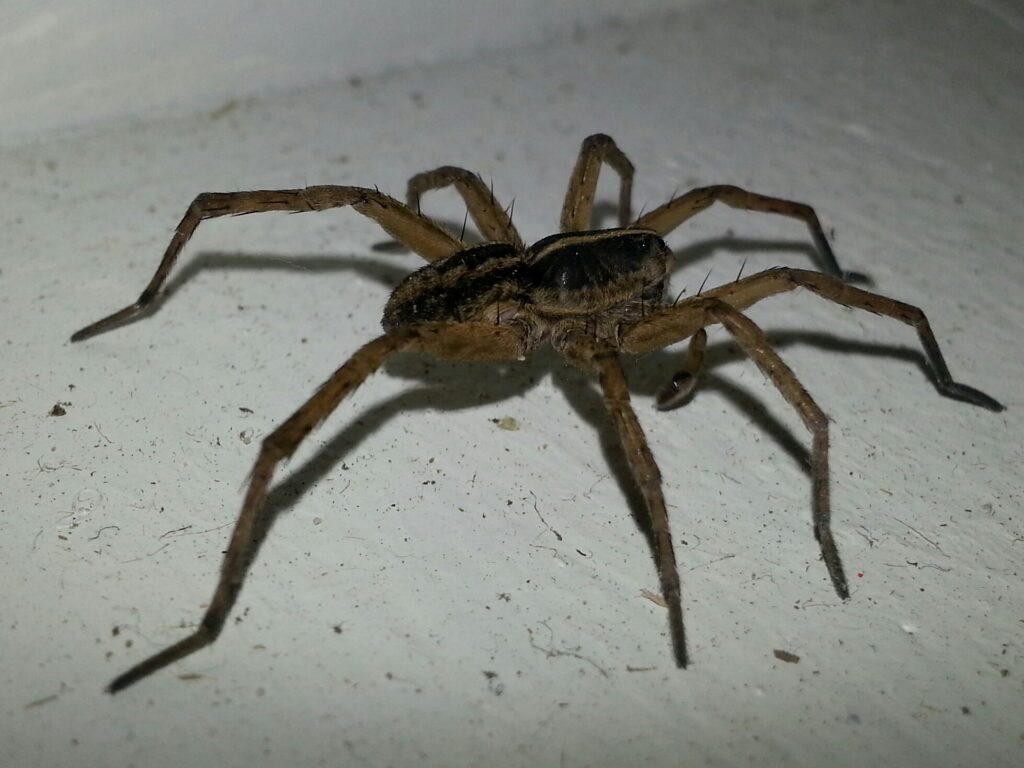 Do you ever find yourself wondering about the small creatures that share our world, navigating alongside us, hidden in plain sight? Among these creatures are sac spiders, captivating little hunters that might just be closer than you think.
With their yellowish or pale tan bodies offset by darker mouthparts, sac spiders are fascinating figures in the animal kingdom. They don’t rely on webs to catch prey; instead, they construct silk sacs where they rest during the day, emerging at night to hunt, always on the move, ever so stealthy. This unique behaviour distinguishes them in the sprawling landscape of North American spiders.
As we dive deeper into sac spiders, a pressing question arises: Are they native to Ontario, and should residents be on guard? Yes, these creatures have carved out a niche for themselves in various parts of North America, including Ontario.
Are sac spiders poisonous? While their presence might stir curiosity or concern—especially with rumours about their venom being potentially harmful—we'll provide clarity and insight. We at Truly Nolen Toronto strive to unravel these mysteries about sac spiders and explore the nuances of their habitat and characteristics. We’ll also discuss whether homeowners need to take steps to safeguard their space from these eight-legged neighbours.
Do you ever find yourself wondering about the small creatures that share our world, navigating alongside us, hidden in plain sight? Among these creatures are sac spiders, captivating little hunters that might just be closer than you think.
With their yellowish or pale tan bodies offset by darker mouthparts, sac spiders are fascinating figures in the animal kingdom. They don’t rely on webs to catch prey; instead, they construct silk sacs where they rest during the day, emerging at night to hunt, always on the move, ever so stealthy. This unique behaviour distinguishes them in the sprawling landscape of North American spiders.
As we dive deeper into sac spiders, a pressing question arises: Are they native to Ontario, and should residents be on guard? Yes, these creatures have carved out a niche for themselves in various parts of North America, including Ontario.
Are sac spiders poisonous? While their presence might stir curiosity or concern—especially with rumours about their venom being potentially harmful—we'll provide clarity and insight. We at Truly Nolen Toronto strive to unravel these mysteries about sac spiders and explore the nuances of their habitat and characteristics. We’ll also discuss whether homeowners need to take steps to safeguard their space from these eight-legged neighbours.
Habitats of Sac Spiders
Curious where sac spiders live? In our quest to better understand the environments that sac spiders frequent, we recognize their adaptability in both natural and indoor settings. These creatures, native to vast regions, thrive in diverse surroundings, making their presence felt not only in nature but also within our homes. Natural Habitats Sac spiders naturally thrive in outdoor environments. They favour trees, shrubs, and leaf litter, where they spin small silk sacs to use as daytime retreats. These spiders are adept climbers, often found in greenery where they hunt for insects during the night. Their ability to adapt to various natural settings makes them a common sight in wooded areas and gardens. While they prefer these natural habitats, some factors lead them to seek shelter indoors. Indoor Habitats When temperatures drop, sac spiders tend to migrate indoors, seeking warmth and protection. They often enter homes through small cracks, window frames, and ceiling corners. Unlike some other spider species, sac spiders do not spin webs to catch prey but create silk sacs where they hide during the day. These sacs can be found in corners of ceilings or tucked away in cluttered areas. The colder months see an increase in their indoor presence as they search for more stable environments.Are Sac Spiders Native to Ontario?
 In this section, we will explore the origins and presence of sac spiders within Ontario. Understanding whether these arachnids are native to the region can help alleviate concerns and allow us to appreciate their role in the local ecosystem. Join us as we look into the questions surrounding their origin and assess whether Ontario is indeed their natural home.
Native or Not?
Yes, sac spiders, specifically the Cheiracanthium mildei species, are indeed native to Ontario. This species is known for its adaptability and has established itself well in both urban and rural settings throughout the province. Their resilience and ability to thrive in varying conditions have allowed them to spread widely across the region.
Widespread Presence
Sac spiders are common in Ontario, particularly noticeable in late summer and early fall. During this time, they often move indoors, making the most out of the province's diverse landscapes. Their widespread presence is a testament to their adaptability, and they can be found in city centers just as easily as in the countryside. Homeowners might notice an increase in sightings as these spiders seek refuge from the cooling temperatures.
In this section, we will explore the origins and presence of sac spiders within Ontario. Understanding whether these arachnids are native to the region can help alleviate concerns and allow us to appreciate their role in the local ecosystem. Join us as we look into the questions surrounding their origin and assess whether Ontario is indeed their natural home.
Native or Not?
Yes, sac spiders, specifically the Cheiracanthium mildei species, are indeed native to Ontario. This species is known for its adaptability and has established itself well in both urban and rural settings throughout the province. Their resilience and ability to thrive in varying conditions have allowed them to spread widely across the region.
Widespread Presence
Sac spiders are common in Ontario, particularly noticeable in late summer and early fall. During this time, they often move indoors, making the most out of the province's diverse landscapes. Their widespread presence is a testament to their adaptability, and they can be found in city centers just as easily as in the countryside. Homeowners might notice an increase in sightings as these spiders seek refuge from the cooling temperatures.
Are Sac Spiders Dangerous?
While sac spiders can bite, their venom is not considered harmful to humans. Most bites result in mild irritation, similar to a bee sting. In rare cases, individuals with sensitive skin may experience more pronounced reactions, but serious complications are uncommon. These spiders usually bite only when provoked, preferring to avoid human contact. When should you be concerned? Despite their non-aggressive nature, sac spider bites can cause discomfort. The bite site might become red and itchy, resembling a mild allergic reaction. It's important to remember that these spiders are generally not looking for trouble and will only bite if they feel threatened. Regular cleaning and sealing of potential entry points can minimize their chances of coming indoors, reducing the risk of encounters. Ultimately, knowing when to be concerned helps keep your peace of mind intact—after all, you deserve a worry-free environment in your home.Signs of a Sac Spider Infestation
When our homes become shelters for these crafty arachnids, identifying the signs of an infestation is crucial. Noticing these indicators can help us act promptly, ensuring peace of mind and a spider-free environment.- Sac Nesting: One of the most noticeable signs is the presence of small silk sacs. These nests can often be found in inconspicuous spots—corners of ceilings, window frames, or amidst clutter. Their appearance signals that these spiders have taken up residence indoors for daytime refuge.
- Increased Sightings: As temperatures drop, you might observe an uptick in spider sightings inside your home. This is often because they move inside seeking warmth, sheltering themselves from the cold outside.
- Nocturnal Activity: If you notice more spider activity at night, it could indicate that these eight-legged inhabitants have made themselves comfortable. They prefer darkness and typically emerge after dusk to hunt for food.
- Presence of Prey Remnants: Finding remnants of insect carcasses, particularly where spiders might haunt, can signify their ongoing hunting activities and establish presence in your living space.
- Unexplained Bite Marks: Although rare, experiencing small, itchy bite marks can suggest the presence of biting insects indoors. These marks are usually harmless and tend to heal quickly but serve as a reminder of their presence.

